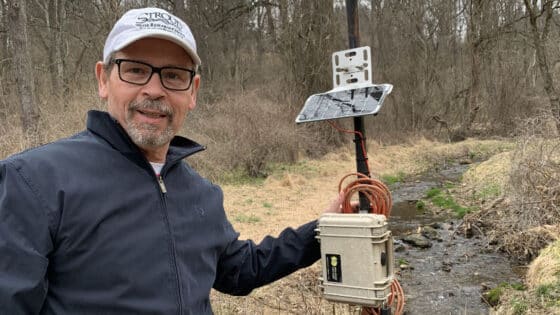Mallin M.A., J. Johnson, S.H. Ensign, and T. MacPherson. 2006. Limnology and Oceanography 51(1):690–701.
doi: 10.4319/lo.2006.51.1_part_2.0690
Abstract
We investigated physical, chemical, and biological variables contributing to biochemical oxygen demand (BOD) in 17 North Carolina lotic and lentic water bodies affected by mild to severe hypoxia. Phytoplankton production created the dominant reservoir of labile carbon driving BOD, and subsequent hypoxia, in a Piedmont river subject to algal blooms, three urban streams, a set of anthropogenically affected tidal creeks, and two urban lakes. Autotrophic phytoplankton production contributed to the BOD load in some rural streams. Autochthonous heterotrophic processes, stimulated primarily by phosphorus and secondarily by nitrogen loading, were the major influences on BOD in two large black water rivers and some rural black water streams. Inputs of biochemical oxygen‐demanding materials from storm water runoff contribute to BOD in some urban and rural streams and black water rivers. We suggest that reductions of hypoxia can be better achieved by a system‐specific approach based on an array of factors that potentially influence BOD, including both autochthonous and allochthonous variables. In some circumstances targeting the nutrient(s) stimulating phytoplankton blooms will suffice to reduce hypoxia, but in other situations targeting nutrient(s) limiting bacterial production will be necessary. Reduction of non—point source inputs of biochemical oxygen‐demanding materials derived from urbanization or other land disrupting activities will be critical in some cases.


